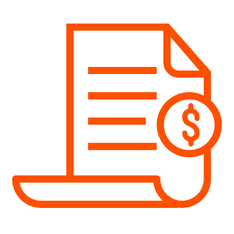Managing finances in a small charity or not-for-profit can feel like a juggling act- especially when you're working with limited time, volunteers, and funding. But with the right setup, Xero can help you stay organised, compliant, and confident in your financial reporting.
This guide is designed for Tier 3 charities in New Zealand who want to make Xero work for them - without needing a finance background. But let’s be honest these tips can be of benefit to all charities.
1. Automate Bank Reconciliation
Why it matters:
Manual data entry is time-consuming and can be error-prone. Xero’s bank feeds automatically import transactions from your bank account, so you can reconcile your accounts quickly and accurately.
How to do it:
Connect your bank account to Xero
Set up bank rules to automatically match recurring transactions (e.g., rent, subscriptions, regular donations) where you don't receive a bill each month.
Reconcile weekly (or daily) to stay on top of your cash flow
Example:
If your charity pays a monthly Zoom subscription, you can create a rule that automatically categorises it under “Subscriptions”.
2. Set up Repeating Invoices
Why it matters:
If your charity receives regular donations, membership fees, or service payments, repeating invoices save time and ensure consistency and professionalism.
How to do it:
Create a repeating invoice template in Xero
Set the frequency (e.g., monthly, quarterly)
Add a personalised thank-you message to build donor relationships
Bonus Tip:
You can customise an invoice template to use as a donee receipt, which meets IRD requirements for donation receipts. This makes it easy to acknowledge donations while keeping your records tidy.
3. Use Tracking Categories
Why it matters:
Tracking categories let you tag transactions by project, funding source, or activity. This is especially useful for reporting to funders or understanding how different parts of your organisation are performing.
How to do it:
Go to Settings > Tracking Categories
Create categories like “Funding Source” or “Programme Area”
Add options such as “MBIE Grant”, “Local Council”, “Youth Programme”, etc.
Example:
When you receive a grant from MBIE, you can tag all related income and expenses with “MBIE Grant” to easily report on how the funds were used.
4. Simplify Your Chart of Accounts
Why it matters:
A well-structured chart of accounts makes financial reporting easier and more meaningful. Many charities use generic accounts that don’t reflect their actual activities.
How to do it:
Review your current chart of accounts
Rename or create accounts that match your operations (e.g., “Workshop Supplies”, “Volunteer Expenses”)
Avoid vague categories like “Miscellaneous” or “General Expenses”
Example:
Instead of lumping all costs under “Programme Expenses”, break them down into “Training Materials”, “Venue Hire”, and “Facilitator Fees”. Make it meaningful to the great work you do for your community.
5. Invite key Members of your organisation (like your Bookkeeper)
Why it matters:
You don’t have to do it all alone. Xero allows you to securely share access with your accountant or bookkeeper, so they can help with reconciliations, reporting, and compliance. You can give access to key governance members so they have oversight on operations as well.
How to do it:
Go to Settings > Users
Invite your bookkeeper with appropriate permissions
Set up a regular review schedule to catch issues early with key members of the team.
Tip:
Use “Advisor” access for professionals and “Standard” or “Read Only” for board members who need visibility but not editing rights.
Bonus Tip: Attach Your Source Documents to Every Transaction
Why it matters:
Attaching bills, receipts, and invoices directly to transactions creates a clear audit trail. It also makes it easier to respond to funder queries, prepare annual reports, and stay compliant.
How to do it:
Upload documents when entering bills or reconciling transactions
Use the Xero mobile app to snap and upload receipts on the go
Store credit card receipts, grant-related invoices, and supplier bills with each transaction
If you have lots of bills you can even utilise tools like Hubdoc to speed up this process.
Need Help Tailoring Xero to Your Charity?
At Varntige, we specialise in helping Tier 3 charities and not-for-profits set up Xero in a way that works for you. Whether you're starting fresh or want to tidy up your existing setup, we’re here to help.
📩 Book a free consultation or ask us about our Xero setup services.










